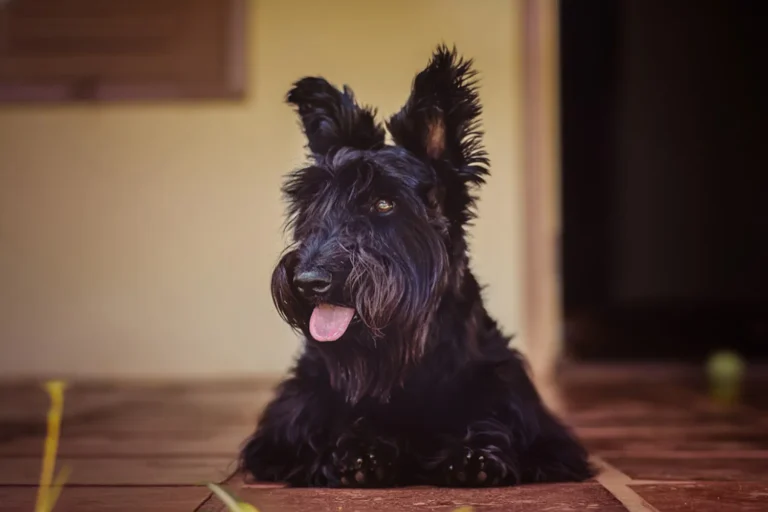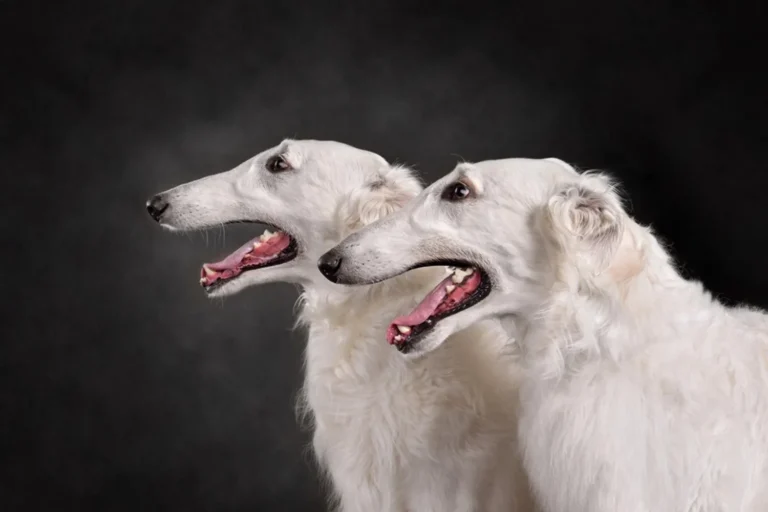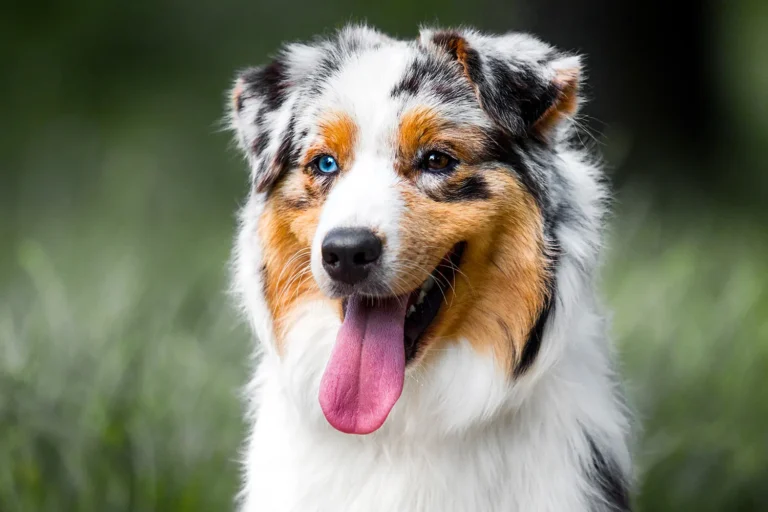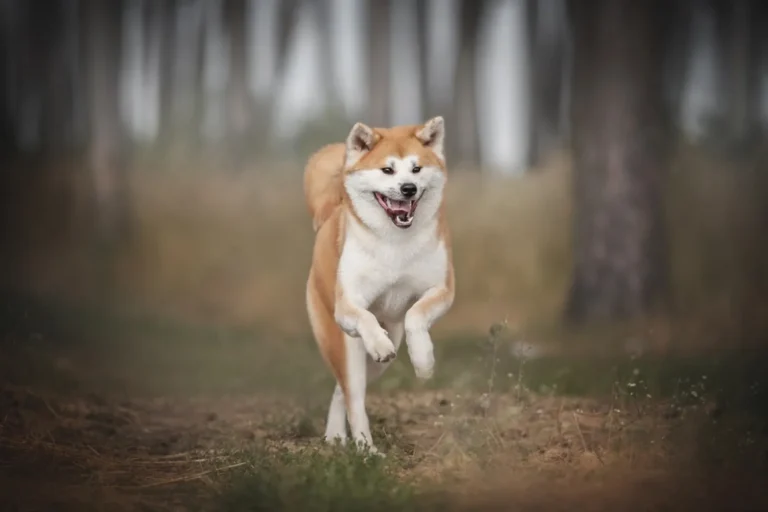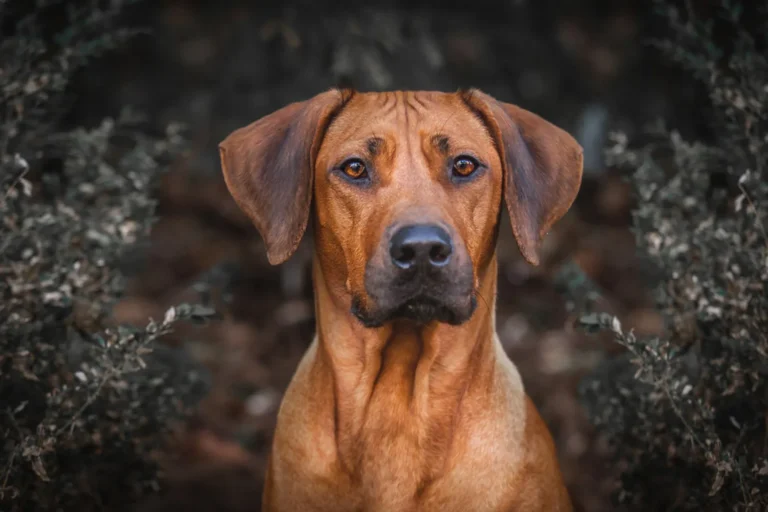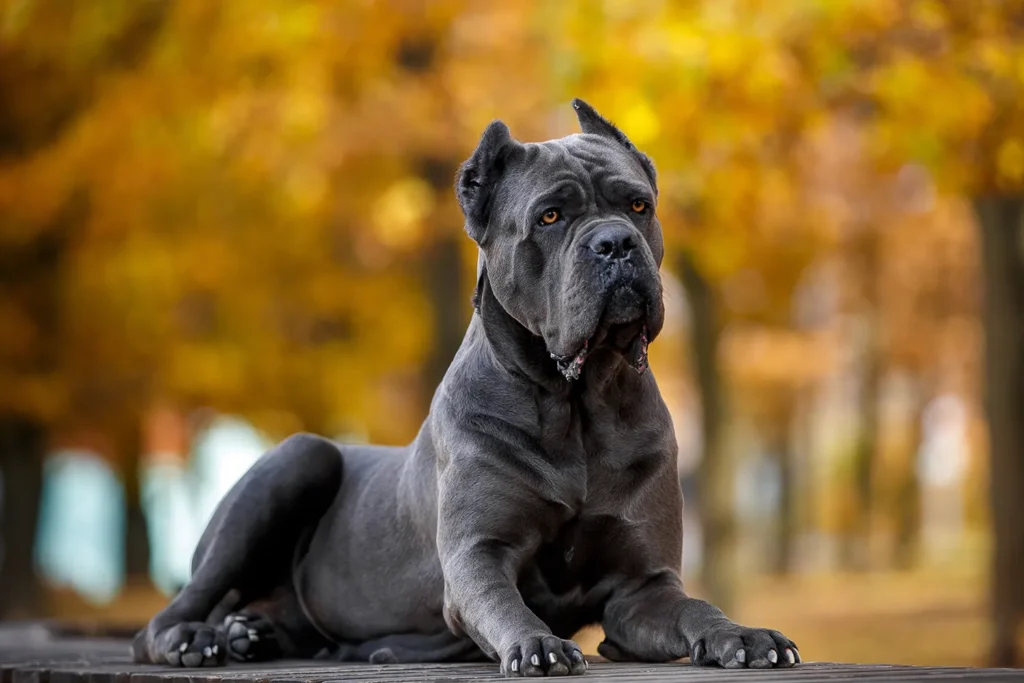
The Cane Corso is rocketing in popularity and it’s easy to see why. They’re big, muscle bound, and surprisingly tender with their people. I still laugh about the first Corso I met: thunderous paws, then a gentle head lean that almost tipped me over. If you’re thinking of bringing one home, plan ahead: sturdy gear, early training, and clear boundaries from day one will make all the difference.
These giants are loyal guardians who thrive on purpose structured walks, brain games, and calm leadership. Socialize early, teach polite greetings for visitors, and keep a drool towel by the door. Expect a big dog budget for food, beds, and tough toys (my friend’s Corso could turn a “durable” squeaker into confetti in minutes). In this guide, I’ll walk you through the essentials so you can enjoy life with a magnificent companion who’s equal parts tank and teddy bear.
Cane Corso History and Origins
When I think about the Cane Corso’s past, I picture those big, broad headed “Molossus” dogs you see in ancient Greek art solid, watchful figures carved into stone and painted on pottery. The Corso belongs to that Molosser family, a group that includes mastiff and bulldog types known for strength, loyalty, and a calm, steady presence. Even today, when a Corso settles beside you with that massive head and steady gaze, it feels like a little piece of history curled up at your feet.
The breed’s roots run deep in Italy, and many believe the Corso descended from Roman Molossian dogs once used alongside soldiers. After the fighting days faded, these dogs settled into civilian life. Italians put them to work driving livestock, helping with hunts, and standing guard over farms and homesteads. I met a farmer in Puglia who swore his father’s Corso could move a small herd along a country lane with just a few shoulder bumps and a stern look. Another time, in a sunbaked olive grove, a young Corso I was visiting with followed me tree to tree quiet as a shadow until a stranger came down the road, and then he made his presence very clear.
Like many old working breeds, the Corso nearly slipped from view in the last century before passionate Italian enthusiasts rallied to preserve it. Their efforts helped shape the modern Cane Corso we see today. The AKC only recognized the breed in 2010, and that recognition brought clear standards that keep breeders connected to the Corso’s Italian heritage. If you’re drawn to the breed, remember that this is still a working dog at heart. Mine did best with structure and a bit of a “job” even if that job was carrying a backpack on hikes or calmly watching the yard. It’s part guardian, part partner, and all history, wrapped in a sleek, powerful frame.
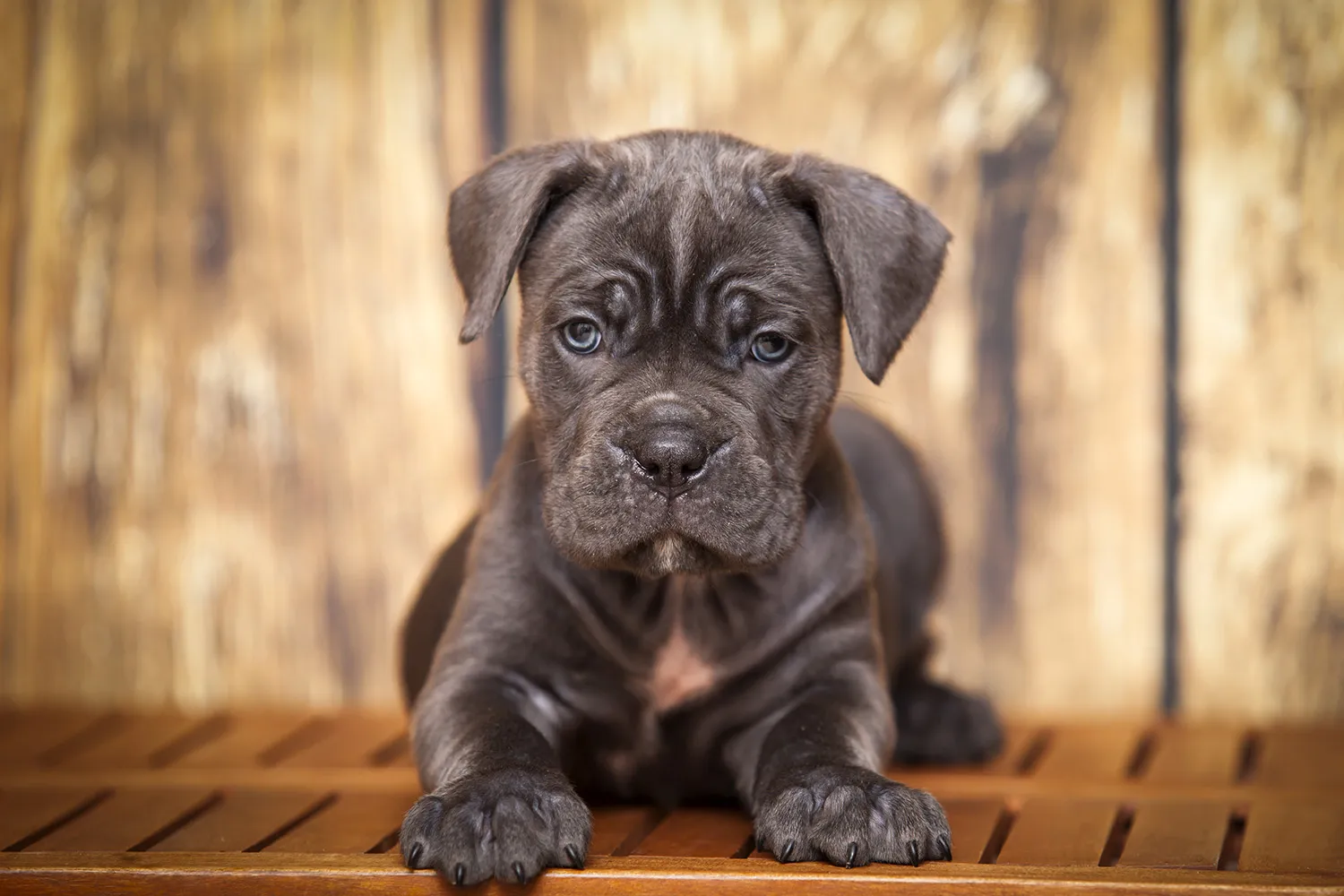
Part of the Mastiff family, the Cane Corso is one of those dogs you spot from across the park and think, wow. Broad chest, thick neck, and a solid, muscular build give them a strong, statuesque presence. But they aren’t the biggest or bulkiest of the Mastiffs there’s a sleek, athletic edge to a Corso that makes them look ready to move. The first time I met one, I expected a lumbering giant; instead, he flowed past like a well trained athlete, all power with surprisingly smooth stride.
Their head is what really seals the look: wide and strong, with a confident, no nonsense expression. Pair that with a well defined, rectangular frame, and you’ve got a silhouette that looks almost sculpted. I always joke that a Corso standing alert could double as a living statue until the tail thumps and gives them away.
If you’re drawn to this breed, plan for their strength from day one. A sturdy, well fitted harness works wonders on that deep chest, and teaching calm leash manners early will save your shoulders later. People will ask about them often and some may be a little intimidated at first. I’ve found a friendly hello and a well behaved Corso do all the talking.
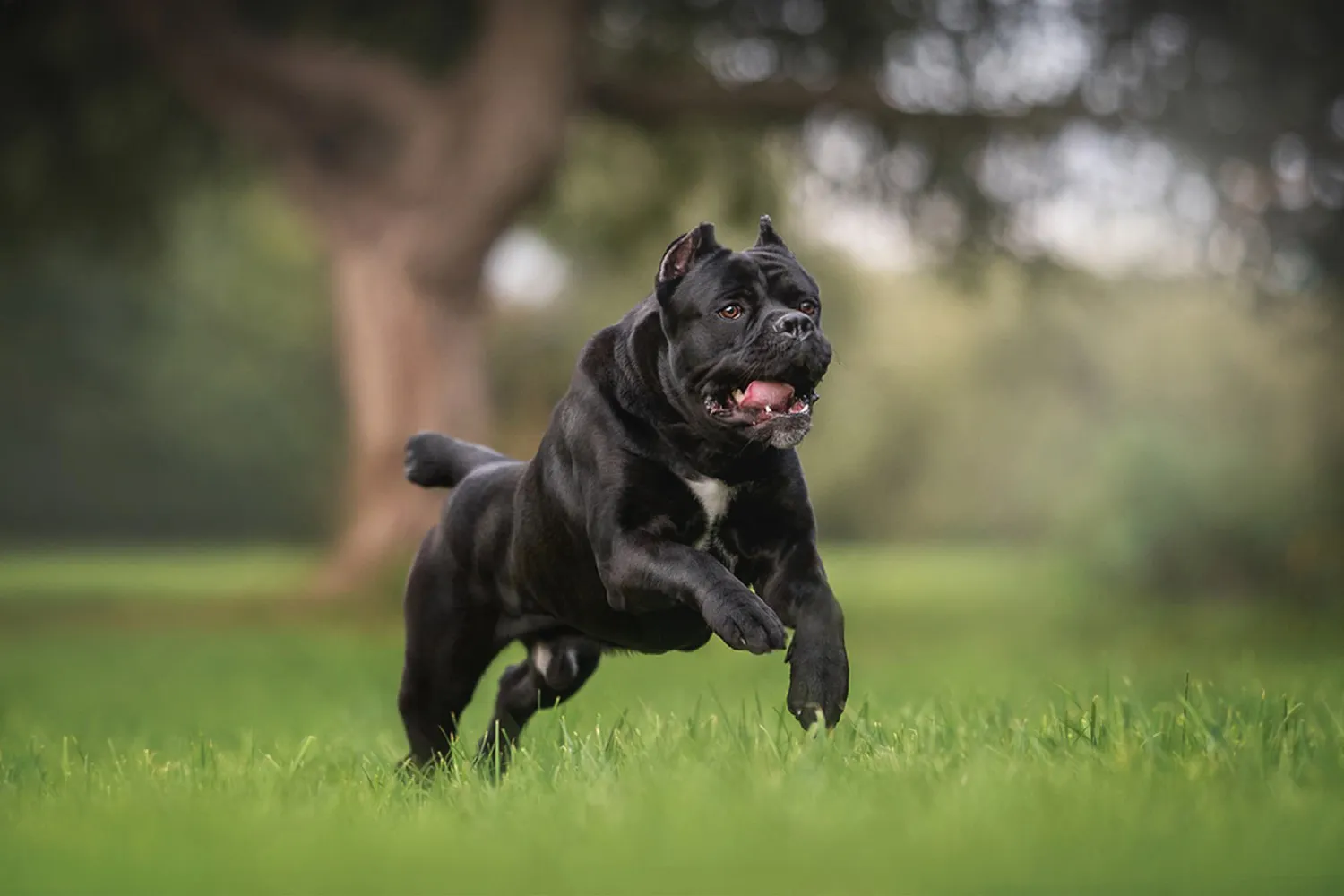
Who Is a Cane Corso Best For?
Cane Corsos are velcro family dogs through and through, happiest when they’re right in the middle of household life. If you’re out of the house for long stretches most days, this probably isn’t the breed for you. When I dogsat a Corso named Tank, he followed me from room to room like a quiet shadow, and if I stepped out to take the trash, he waited at the door with the most offended look. They need someone who enjoys being active and is home often enough to give them company and structure.
Be ready for drool glorious, stringy, flung on the walls drool. I keep a little “slobber station” by the back door with towels and a spray bottle. It’s not glamorous, but it saves the couch. Feeding a big, athletic dog is another real world consideration. Corsos can put away a lot of high-quality food, so budget accordingly, and don’t forget the extras like chews, training treats, and pet insurance. Your wallet will thank you later.
Mentally and physically, they’re workers at heart. They thrive when they have a job: structured training, scent games, carting, carrying a pack on hikes, or even “helping” by learning to pick up toys. A trainer friend showed me a flirt pole game that could wear out a Corso in 10 minutes pure magic on rainy days. Daily, purposeful exercise is a must. Not just a quick loop around the block, but real walks and brain work. Without it, they can get destructive fast. My friend’s Corso, Luca, once redecorated a living room by “opening” a sofa cushion out of boredom.
Because of their size and strength, a securely fenced yard or garden is ideal. Think sturdy and tall Corsos don’t test fences often, but when they do, flimsy won’t cut it. If you work part-time or have a flexible schedule and you enjoy training, problem solving, and outdoor time, a Cane Corso can be an incredible partner: loyal, bright, and wonderfully devoted. Add a dog walker or daycare on busy days, stock up on puzzle toys, and keep those drool towels handy. You’ll be golden.
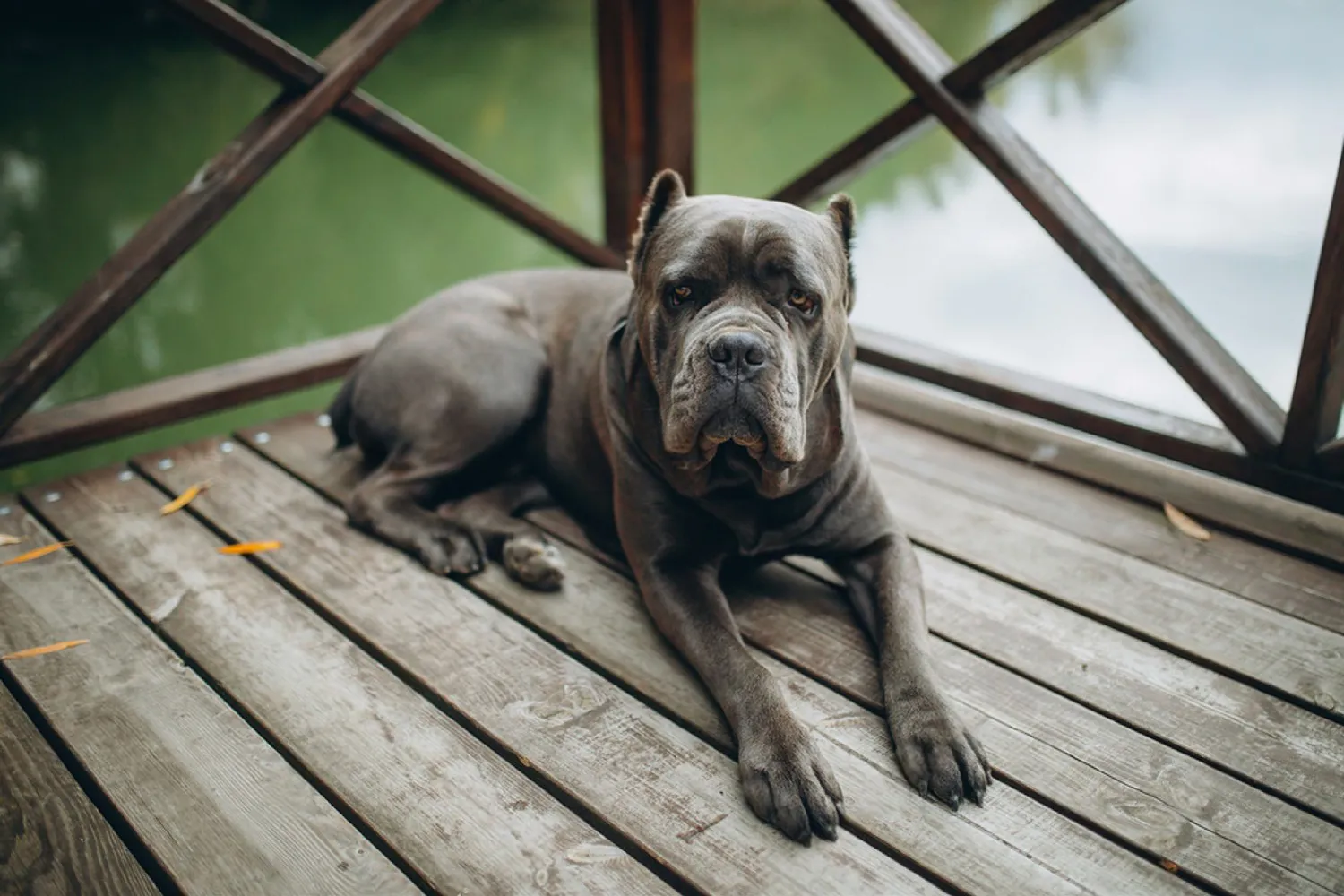
Cane Corso Grooming and Shedding
Cane Corsos are blissfully low maintenance in the grooming department, and that’s a gift when you’ve got a dog the size of a small sofa. You won’t find tumbleweeds of hair chasing you down the hallway, but you will see some shedding thanks to their short, double layered coat. The undercoat releases a bit all year, with a real uptick in spring. When that seasonal shed hits, I switch to daily brushing on the porch with a rubber curry brush or grooming glove five minutes and you’ll get those little tufts before they land on your couch. The rest of the year, a quick weekly brush keeps the coat shiny and spreads those healthy natural oils. I also like to use the brush time to check for any bumps, dry spots, or hitchhiking burrs after a hike.
Baths are simple: rinse off after muddy adventures and use a gentle dog shampoo as needed overbathing can dry out their skin. Dry them well, especially the chest and neck. I keep a towel by the door for jowl wipe downs after water breaks; my friend’s Corso would leave a trail after every drink, and a quick wipe saved his walls and the dog’s skin from irritation.
Don’t forget the basics. Trim nails regularly so they don’t click on the floor every couple of weeks works for most dogs, and treats afterward make it drama free. Check ears weekly and clean with a vet approved solution, especially if your dog has natural, floppy ears that trap moisture. For teeth, aim to brush several times a week; dental chews help, but nothing beats a toothbrush. With that simple routine brushing, nails, ears, teeth your Cane Corso will look sharp and feel great without turning grooming into a full-time job.
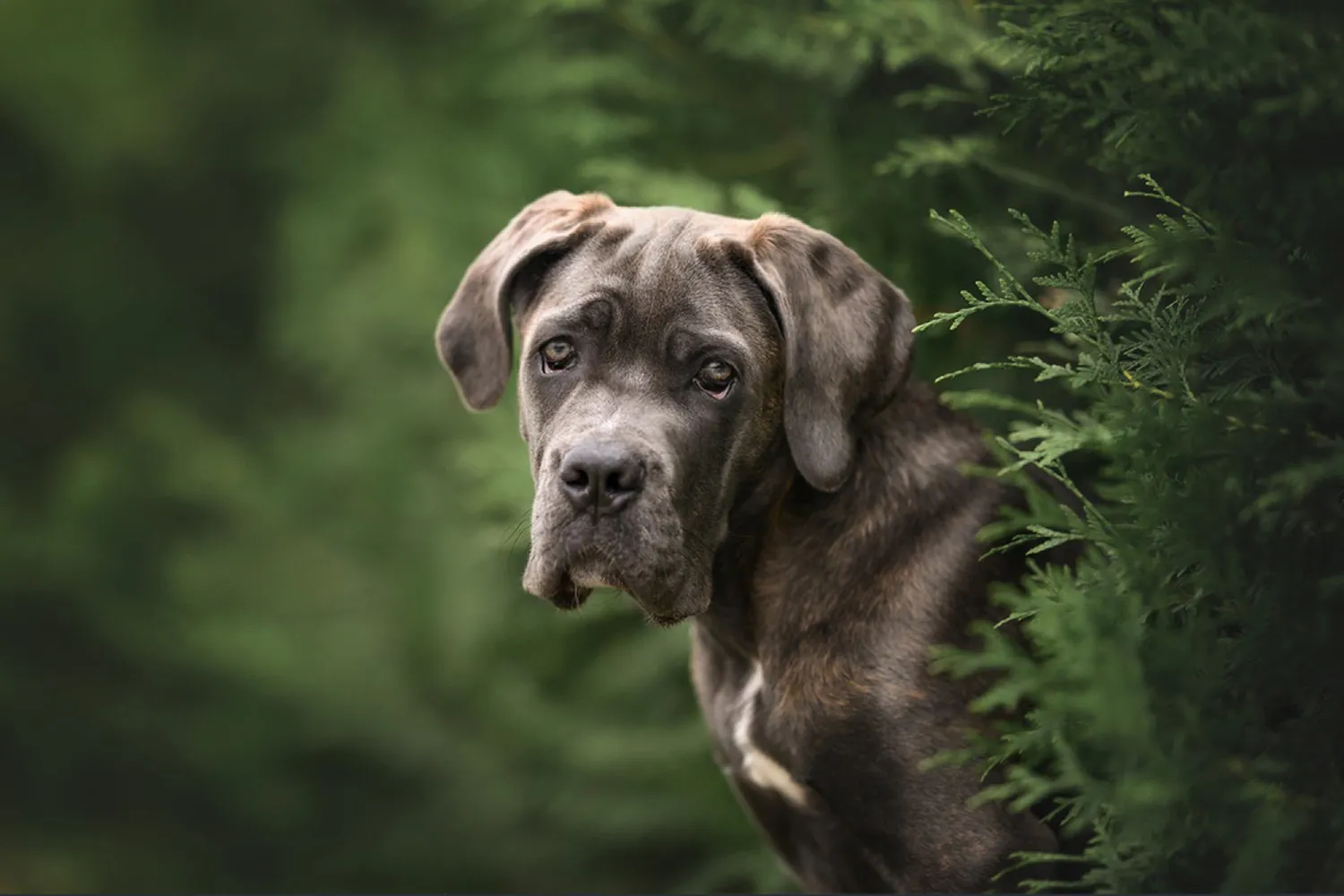
Do Cane Corsos Bark a Lot?
Most Cane Corsos are the strong, silent type more likely to watch and assess than shout about it. They tend to save their voice for moments that matter. When something truly odd is happening, that deep, impressive bark shows up fast. I remember visiting a friend whose Corso would snooze through delivery trucks and kids on bikes, but the second the gate latch clicked after dark, he gave two thunderous barks that said, “I see you.” Then he settled right back down. Calm is their default; decisive is their alert mode.
They’re natural guardians, so you’ll hear a warning bark if they sense a threat or intrusion. Doorbells, unfamiliar figures near the yard, or a late night rustle can prompt a brief alarm. Day to day, though, many Corsos “talk” more with looks, sighs, and those funny little huffs than with constant barking. Of course, individuals vary young, under exercised, or under socialized dogs may get a bit chatty. What helps? Early socialization so they learn what’s normal, plenty of physical and mental exercise, and a clear routine. I like to reward one or two alert barks, then cue “quiet” and praise the calm. Closing curtains in busy rooms, using puzzle feeders, and practicing a solid “place” command cut down on window patrol. Respect their protective instincts and give them a job, and you’ll have a low bark, high reassurance roommate.
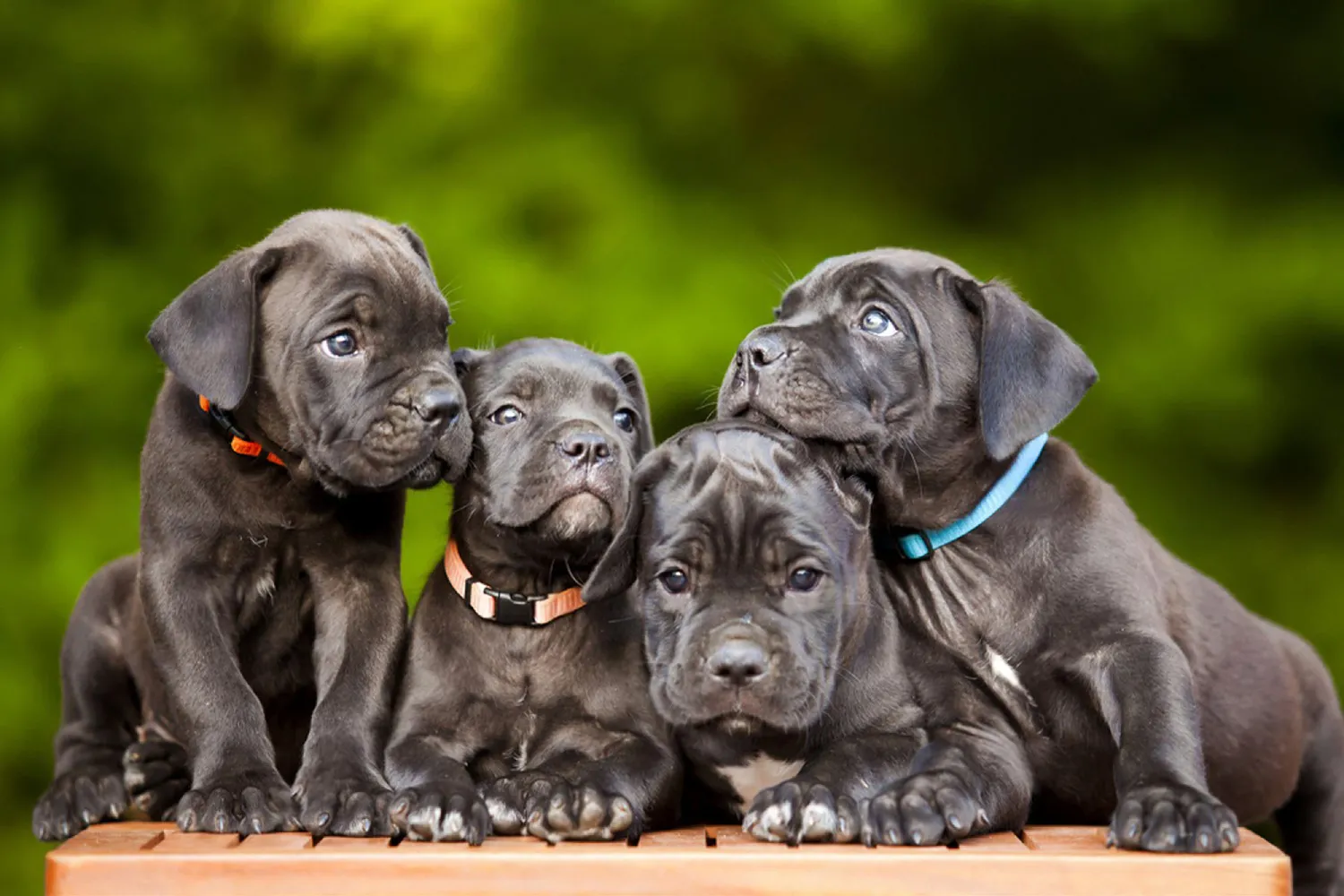
What is the average weight and height of a Cane Corso?
If you’ve ever had a Cane Corso lean their whole heart (and body) against your legs, you know what “large breed” really feels like. Despite their impressive presence, Corsos are considered a large breed rather than a giant one. Males typically weigh around 45-55 kg (about 100-121 lb) and stand roughly 62-72 cm tall at the shoulder (24-28 inches). Females are a little more compact, usually 40-45 kg (88-99 lb) and about 60-66 cm at the shoulder (23.5-26 inches). Big? Absolutely. Giant? Not quite. https://en.wikipedia.org/wiki/Cane_Corso
For a bit of real world context, my friend’s Corso, Bruno, weighs about 48 kg and still believes he’s a lapdog when he sits on my foot, I feel every single pound. Their shoulder height means they can comfortably rest their chin on your coffee table, and if you’re holding a sandwich, well, consider it within easy sniffing distance. When you measure height, do it at the withers (the top of the shoulders), not the head standing tall on tiptoes is a favorite Corso trick during measurement time.
A quick tip from experience: invest in sturdy gear sized for large breeds think a well fitted harness and a roomy, tough bed. Keep an eye on body condition rather than the scale alone; you should feel ribs with light pressure but not see them sharply. And while Corsos reach much of their height within the first year, they tend to “fill out” over time, so don’t be surprised if that sleek teenager turns into a solid, muscular adult. Big hearts, big cuddles, and just the right amount of “large” to fill your home with love.
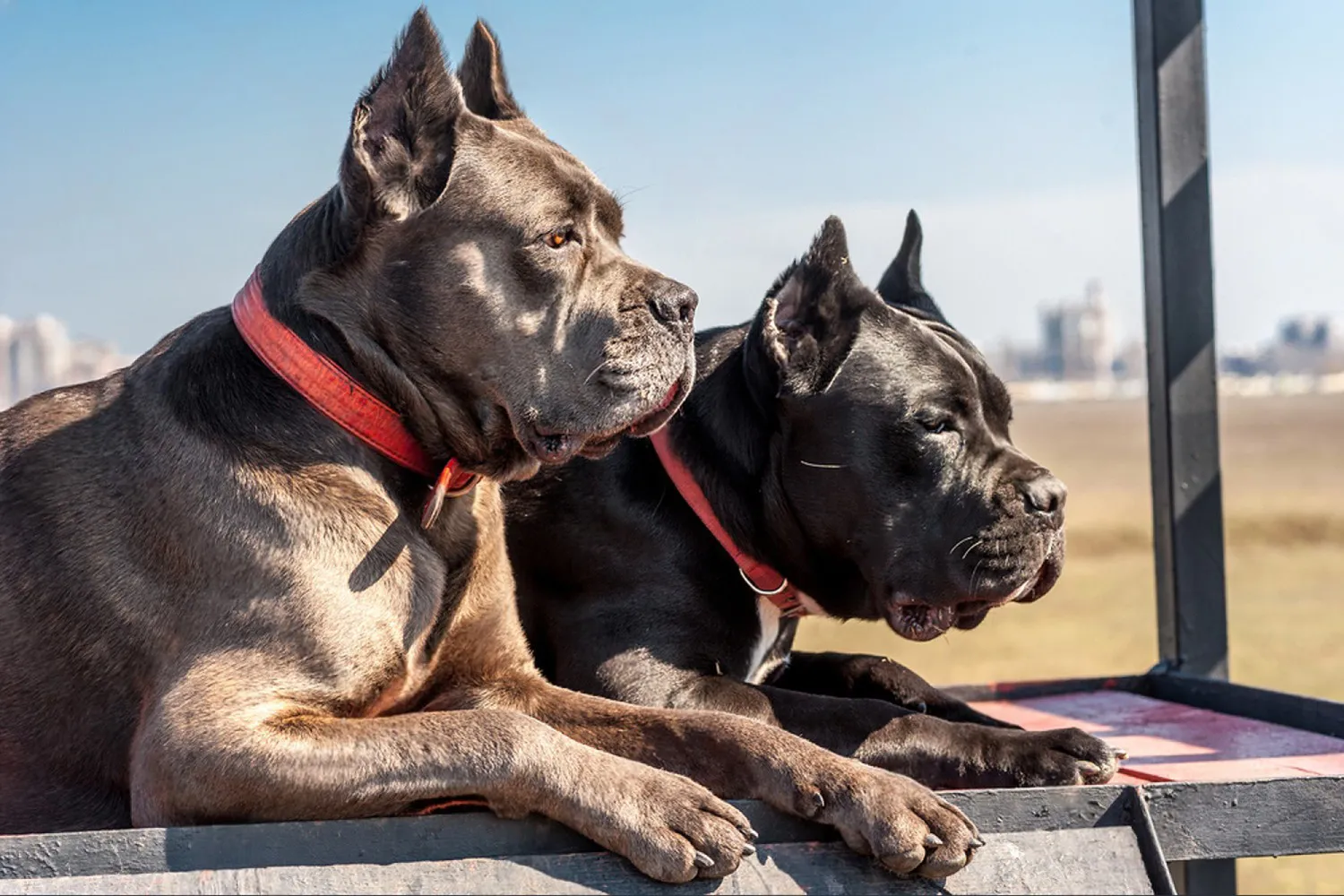
Are Cane Corsos easy to train?
Short answer: they’re very trainable, but they’re not a “set it and forget it” kind of dog. With a big, powerful breed like the Cane Corso, early socialisation and puppy classes aren’t just a nice idea they’re essential. Get them out to see the world while they’re young: different people, calm dogs, busy streets, the vet’s office, even the sound of the vacuum. That steady exposure helps a naturally protective dog grow into a confident, polite adult instead of a bossy bodyguard. I remember taking a friend’s Corso pup to a hardware store on a rainy Saturday lots of noise, carts, and strangers and by the end, he was snoozing at our feet like a pro. Those little outings add up.
For training, think clear rules and loads of positive reinforcement. Cane Corsos respond beautifully to upbeat, structured sessions with high value treats, toys, and praise. Keep things short and purposeful sit, down, stay, leash manners, and a rock-solid “leave it” and recall. I like teaching “place” early; it’s a lifesaver when the doorbell rings and you want calm instead of chaos. Stay consistent so they don’t start running the household schedule. If you can, team up with a trainer who knows guardian breeds especially during the teenage phase when they love to test boundaries. Mix in brain work like scent games or puzzle feeders, and practice polite greetings. Do that, and you’ll have a steady, well mannered partner who’s a joy to live with.
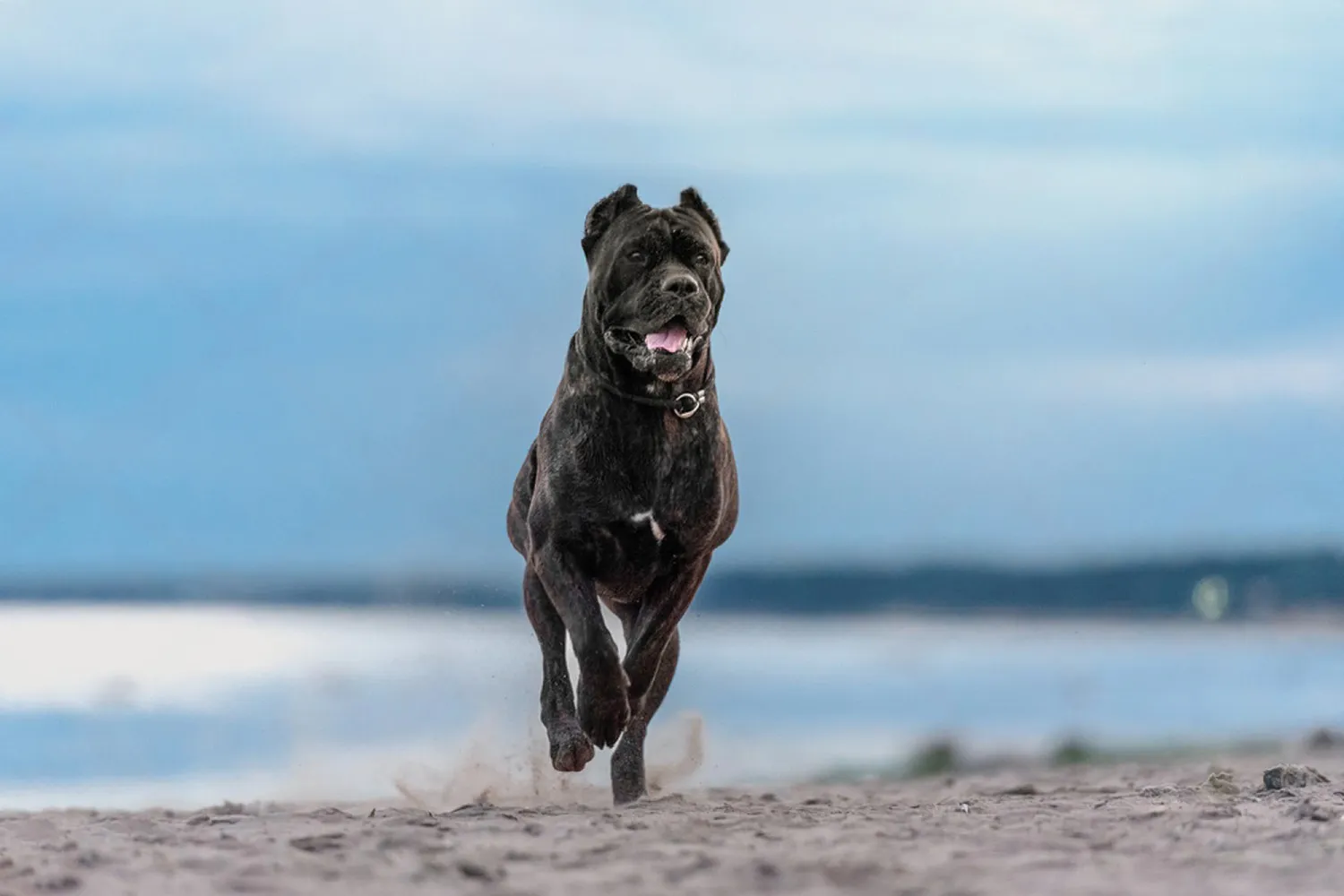
How Do Cane Corsos Behave? A Look at Their Temperament and Personality
A Cane Corso has that quiet, “I’ve got this” confidence you can feel from across the room. They’re smart sometimes startlingly so and if you don’t step into the leader role, they will. I once watched my neighbor’s Corso figure out how to nose the pantry door open for treats, then pretend innocence when caught. They’re the type to test the edges of the rules, not because they’re naughty, but because they’re clever and like knowing where the boundaries are.
With a calm, assertive owner, though, that same intelligence becomes a superpower. Clear routines, consistent cues, and fair expectations are the key. I like to set simple “house rules” from day one: sit before meals, wait at doorways, and settle on a mat when the doorbell rings. It sounds basic, but with a big dog, basics are everything. A Corso who understands your rules will relax into them like a big, loyal shadow who’s happy when you’re in charge. Keep their brain busy, too. Short training sessions, scent games in the yard, and puzzle feeders help keep that sharp mind satisfied.
As family dogs, Cane Corsos can be deeply affectionate and surprisingly gentle. The first time my niece met a Corso named Bruno, he lowered his massive head right into her tiny hands and stood perfectly still. That said, size matters. A happy tail or a playful shoulder bump can topple a toddler, so supervision is non negotiable. Teach kids how to greet politely and give the dog a quiet “safe spot” to retreat to when they need a break.
Socialization is a must, and not just for puppies. Think calm, positive introductions to all the things they’ll encounter: people in hats, bikes, delivery drivers, friends visiting the house. I like to do structured hellos dog on leash, a sit, then a quick sniff, praise, and we move on. Reward the behavior you want calm, patient, and attentive. Harsh corrections tend to backfire with a sensitive, proud breed like the Corso; they respond better to steady leadership and clear guidance.
Bottom line: if you can be that strong, fair leader consistent, loving, and ready to train you’ll find a Cane Corso to be a devoted family companion. They’re confident by nature and unbelievably smart, and with the right structure and socialization, they’re gentle giants at home and polite citizens out in the world.
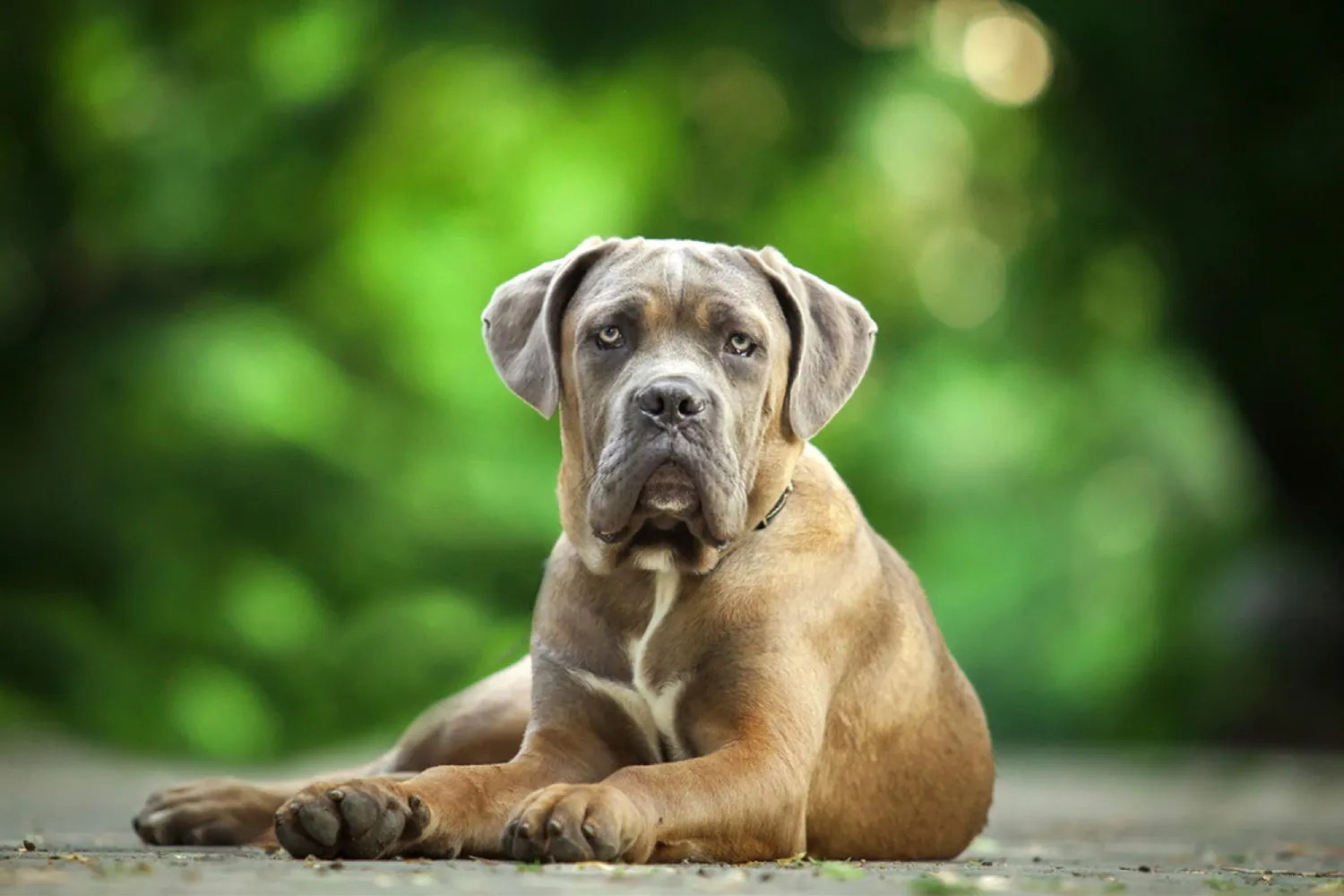
Does the Cane Corso have any common health issues?
Cane Corsos are generally sturdy, healthy dogs, especially when they come from responsible breeders who screen their breeding dogs. Still, like any breed, there are a few conditions to know about so you can catch things early and keep your big buddy feeling great.
– Idiopathic epilepsy: This is a neurological condition that can cause seizures. It’s scary to witness, but many dogs live long, happy lives with medication and monitoring. If your Corso has a seizure, stay calm, keep them safe from bumps, and call your vet. I keep a little “seizure log” on my phone time, length, what happened before so the vet has clear info.
– Eyelid abnormalities (entropion/ectropion): Sometimes the eyelids roll inward or outward, irritating the eye. Signs include squinting, redness, pawing at the face, or lots of tearing. A friend’s Corso had mild entropion; a quick corrective surgery made a world of difference. I do a fast eye check after dusty hikes and wipe gently with a damp cloth to keep things comfortable.
– Hip dysplasia: A hereditary issue where the hip joint doesn’t fit perfectly, which can lead to arthritis. Watch for stiffness after naps, reluctance to jump, or that “bunny hop” gait. Keeping your Corso lean is the single best gift you can give their joints. I use rugs on slippery floors, ramp instead of jumping into the SUV, and favor joint friendly exercise like steady walks and swimming.
– Demodex mange: Caused by mites that can lead to patchy hair loss and skin irritation, especially in young or stressed dogs. It looks alarming but is very treatable under a vet’s care. Resist the urge to try harsh shampoos follow your vet’s plan, and be patient. I’ve seen patches fill back in beautifully with the right treatment.
Even with a healthy puppy, life can throw curveballs. Ask breeders about health testing and any history of seizures, eye issues, or hip problems, and plan for regular vet checkups. A good diet, sensible exercise, nail trims, and keeping stress low go a long way.
And yes pet insurance. I like to enroll early, before any issues pop up. It turned a nerve‑wracking “do we need X‑rays?” moment into a simple “let’s do it” for me, and it’s saved me more than once. Between smart prevention and a safety net, your Corso can spend more time doing what they do best: being your loyal shadow and gentle bodyguard.
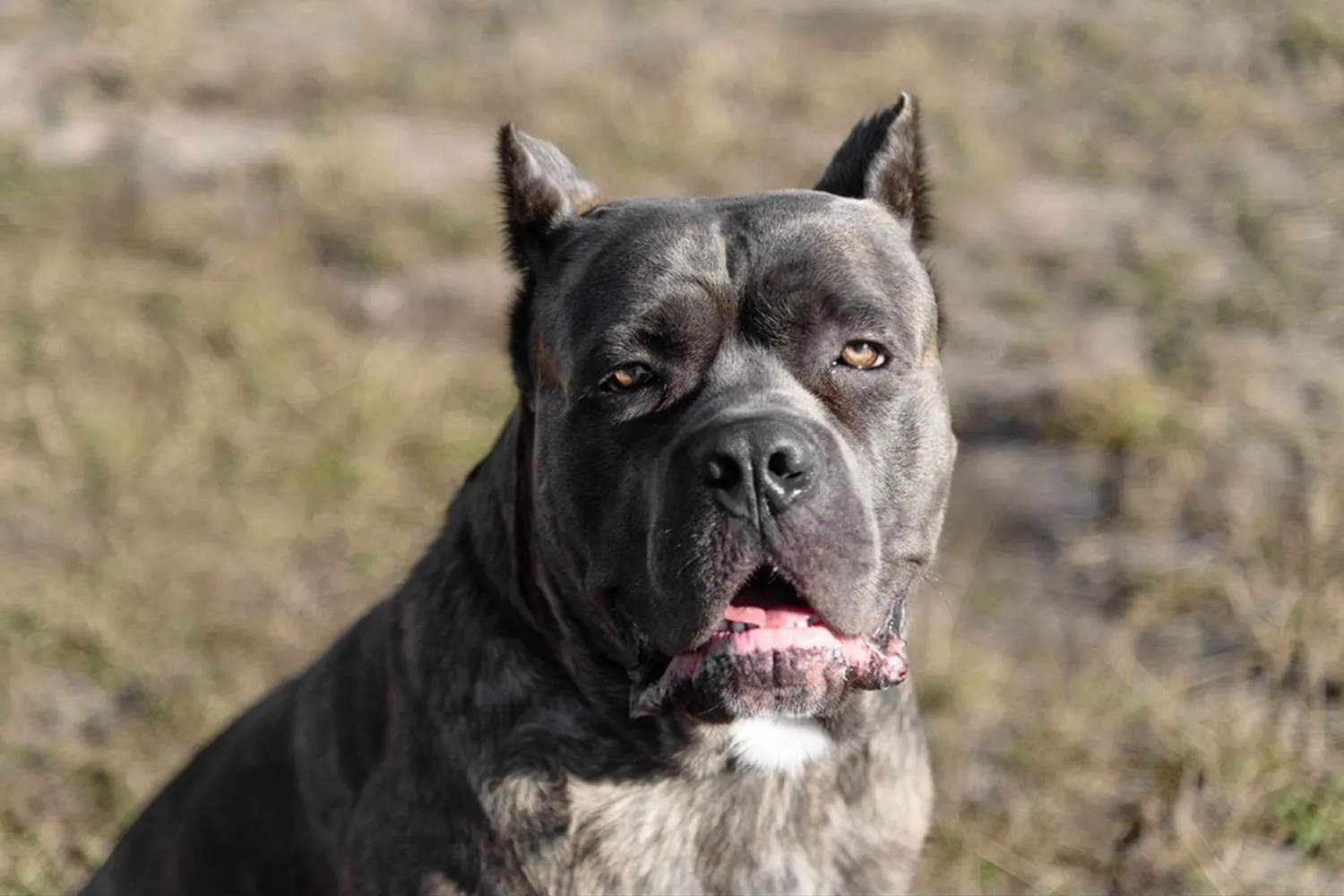
What is the lifespan of a Cane Corso?
Like many large breeds, the Cane Corso’s clock ticks a bit faster, and most live around 9-12 years. That can feel short when you’ve fallen in love with a big, goofy shadow who follows you from room to room. My friend’s Corso, Bruno, made it to 11 and was still trotting after tennis balls slowly, proudly, and with that “I’ve still got it” sparkle. A few do stretch past 12, but it’s less common, so making each year a good one really matters.
You can stack the deck in their favor with everyday choices. Keep them lean with a high-quality diet and measured portions extra pounds are hard on big joints and the heart. Aim for steady, sensible exercise: two brisk walks, some play, and joint friendly activities over endless high impact jumping. I start senior vet checkups around age 7 for Corsos, with regular screenings, dental care, and conversations about supplements your vet recommends. Mental work counts, too puzzle toys, short training refreshers, and scent games keep their brains busy and spirits bright. Small habits, done consistently, add up to more happy, healthy time together.
How much does a Cane Corso need to be fed?
There’s no getting around it Cane Corsos are big dogs with big appetites. My friend’s Corso, Bruno, used to sit by the pantry like a furry bouncer at mealtimes, just to make sure no one forgot him. The exact amount your Corso needs really does depend on the brand and formula you choose. Kibble can vary a lot in calories per cup, so start by checking the feeding guide on the bag, then adjust for your dog’s age, weight, and activity level. I like to begin at the lower end of the recommendation and watch body condition for a couple of weeks, nudging the amount up or down as needed.
Feeding measured meals at set times usually twice a day for adults is the easiest way to keep a healthy weight. I measure with a scoop or, better yet, a small kitchen scale to be consistent. Puppies and very active youngsters often do better with three to four smaller meals until they’re older, then you can shift to two. A regular routine isn’t just about good manners around the bowl; for deep chested breeds like the Corso, predictable, portioned meals can help lower the risk of bloat. I also use a slow feeder bowl for speedy eaters and keep playtime calm for about an hour before and after meals.
Remember to factor in treats and table scraps those calories count. A simple check I use: you should be able to feel ribs with light pressure, see a slight waist from above, and a gentle tummy tuck from the side. If your Corso’s getting a little plush around the middle, trim the daily ration by about 10% and reassess in a week. If they’re looking lean or training hard, bump it up a touch. And because every dog is different, a quick chat with your vet about your specific food brand, your dog’s lifestyle, and any tummy sensitivities is always a smart move.
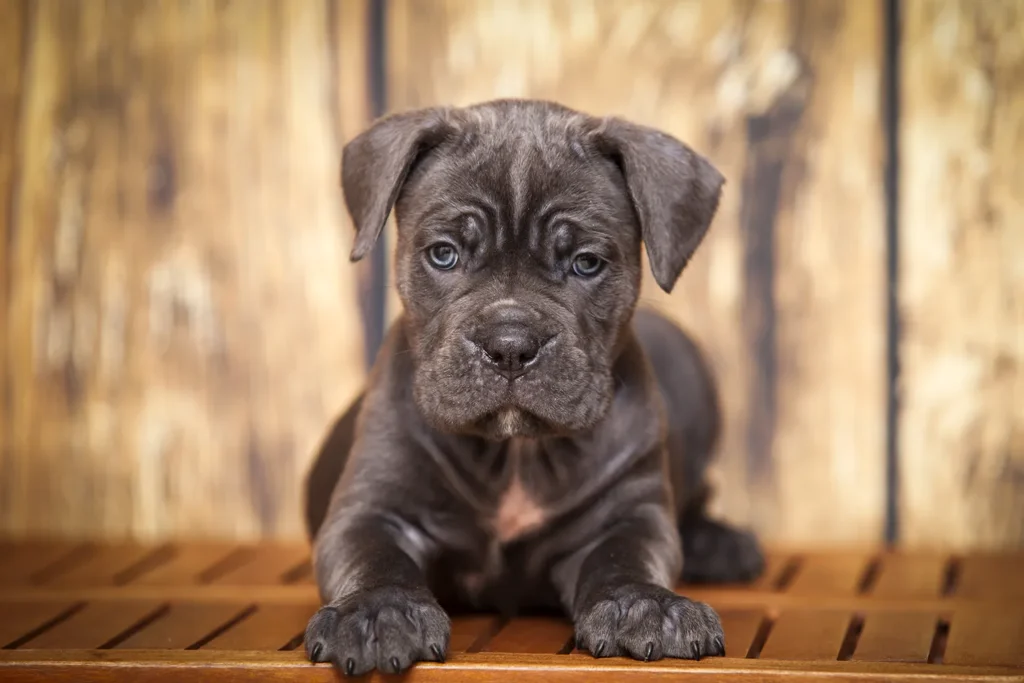
Cane Corso FAQs
Are Cane Corsos an easy dog breed to socialise?
Because they grow into big, powerful adults, early socialisation isn’t just helpful for a Cane Corso it’s essential. Start right away with calm, positive introductions to the world: different people (hats, beards, kids with scooters), friendly dogs, new sounds, and odd surfaces like metal grates or crunchy leaves. I used to bring a pocketful of treats and reward every curious sniff and polite glance. Keep your puppy on a lead at first so you can guide them, and watch their body language loose wiggly hips and a soft face mean “I’m good,” while stiff posture or tucked tail means “let’s slow down.”
Short, frequent meet ups work better than one big overwhelming outing. Parallel walks with a steady adult dog can be magic; you’re moving together without the pressure of a face to face sniff, and confidence grows naturally. Puppy classes are fantastic too they’re controlled environments where pups can mix safely and you pick up training tips at the same time. I always suggest skipping crowded dog parks until your Corso has solid manners and recall. Repetition is your friend: the more calm, positive experiences you stack, the more sociable and well mannered your Cane Corso will be as they mature.
Do Cane Corsos make good guard dogs compared to other dogs?
Absolutely. The breed was developed to guard, and that instinct is still very much alive. Most Corsos are naturally watchful and protective of their families without being needlessly reactive. My friend’s Corso, Nero, announces the delivery driver like clockwork one deep “woof,” a head tilt, and then he waits to be told what’s next. That’s the sweet spot. With good socialisation and obedience training, a Corso becomes a discerning guardian who can tell “normal life” from true trouble. Teach cues like “quiet,” “place,” and a solid recall so their protective nature stays polite and under your direction.
Is the Cane Corso dog breed popular?
They’re not quite in Labrador or German Shepherd territory, but the Cane Corso has definitely been rising in popularity around the world. Once people meet one big heart, bigger head, and surprisingly tender with their people it’s easy to see why fans fall hard. Popularity is a double edged sword, though. More demand can attract irresponsible breeders, so do your homework and take your time.
Where can I get Cane Corso puppies?
Look for a reputable breeder who prioritises health, temperament, and responsible placement. Be wary of bargain basement online ads; low prices often signal puppy mills or careless breeding, which can mean health and behaviour problems later. A responsible breeder will have puppies wormed and vaccinated, and they’ll screen breeding dogs for common issues ask about hip and elbow evaluations, heart checks, and eye exams. They should welcome your questions, let you meet the mother (and ideally the father or close relatives), and provide clear contracts, health records, and guidance for the first weeks at home.
Expect a waitlist; that’s often a good sign. And if you’re open to it, check breed specific rescues Corsos do end up needing new homes, and an adult can be a wonderful match for the right family. Whether you go the breeder or rescue route, choose with your head and your heart. Your future shadow and couch hog will thank you.
Disclaimer:
This article is for informational purposes only and doesn’t replace professional veterinary or training advice. Always consult a certified vet or dog trainer for guidance specific to your pup.

